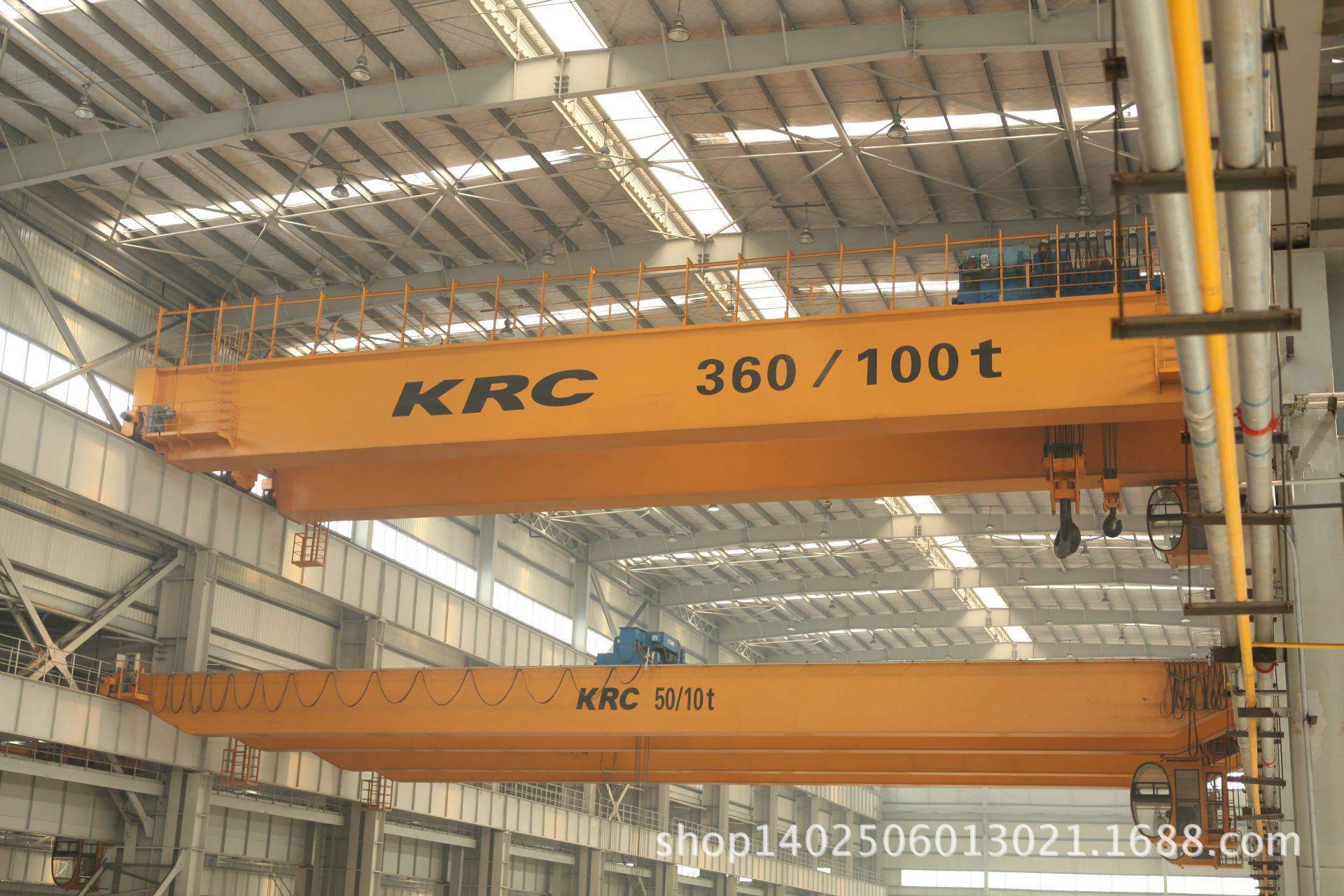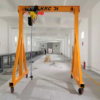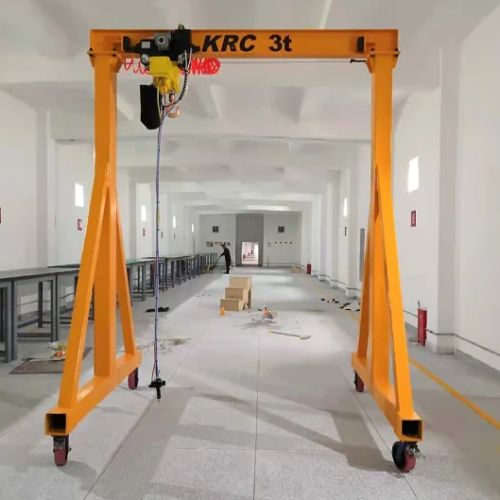100 ton overhead crane Safety Certifications
When dealing with a 100-ton overhead crane, safety certifications are paramount for ensuring operational safety and compliance with regulatory standards. The following are key safety certifications and standards that should be adhered to:
1. OSHA (Occupational Safety and Health Administration):
– OSHA standards in the United States require that overhead cranes comply with 29 CFR 1910.179.
– Regular inspections, maintenance protocols, and operator training are mandated.
2. ASME (American Society of Mechanical Engineers):
– ASME B30.2 covers the construction, installation, operation, inspection, testing, and maintenance of overhead and gantry cranes.
– This standard emphasizes periodic inspections by qualified personnel.
3. CMAA (Crane Manufacturers Association of America):
– CMAA Specification No. 70 pertains to heavy-duty cranes.
– It outlines requirements for crane construction, and performance criteria, emphasizing the design considerations for safety.
4. ISO (International Organization for Standardization):
– ISO 9001 ensures quality management systems are in place, fostering consistent production and service provisions.
– ISO 9927-1 specifies criteria for the inspection, maintenance, and operation of cranes.
5. CE Marking (Conformité Européenne):
– In Europe, overhead cranes must be CE-marked, indicating compliance with the EU’s Machinery Directive (2006/42/EC).
– The machinery must meet health and safety standards before being placed on the market.
6. EN Standards (European Norms):
– EN 15011 specifies design, fabrication, installation, inspection, and testing requirements for overhead cranes.
– EN 1090 must be met for structural steel parts fabrication.
7. NDT (Non-Destructive Testing) Certifications:
– Ensures crane components are free from defects that could compromise their integrity.
– Methods include ultrasonic testing, magnaflux, radiographic inspection, etc.
8. Operator Certification:
– Crane operators should be certified as per regulations like NCCCO (National Commission for the Certification of Crane Operators) in the U.S. or equivalent in other regions.
– Training includes the safe operation, load handling, and emergency procedures.
Compliance with these certifications ensures the crane operates safely, minimizing risks to personnel and equipment. Regular audits and adherence to updated standards are crucial for continued safety and operational efficiency.
List Reference Technical Parameters of “100 ton overhead crane”
The technical parameters of a 100-ton overhead crane provide essential guidelines for its design, capability, and operation. Here’s a summarized list of critical reference parameters:
1. Load Capacity:
– Rated Load: 100 tons
2. Span:
– Usually ranges from 10 to 40 meters, depending on the application.
3. Lifting Height:
– Typically between 10 to 30 meters, can vary based on the specific use case.
4. Lifting Speed:
– Can range from 0.5 to 10 meters per minute; adjustable speeds are often available for precision and efficiency.
5. Cross Travel Speed:
– Generally ranges from 2 to 20 meters per minute.
6. Long Travel Speed:
– Typically between 20 to 60 meters per minute; varies with crane design.
7. Work Duty Class (FEM/ISO Standards):
– Common classes include A5, A6, or A7, indicating moderate to heavy-duty usage.
8. Control System:
– Options include pendant control, remote wireless control, or a cabin control system.
9. Power Supply:
– Mostly operates on three-phase AC power; standard voltages can be 380V, 415V, 440V, or as specified.
10. Motor:
– Lifting and traveling motors can vary from 15 to 75 kW based on operational requirements.
11. Braking System:
– Electromagnetic disc brakes are typically used for both lifting and traveling mechanisms.
12. Hook Approaches:
– Minimum hook approach values (C dimension) are critical to optimizing the crane’s working area.
13. Environmental Conditions:
– Designed to operate in a temperature range from -20°C to +40°C; can be customized for extreme conditions.
14. Safety Features:
– Overload protection, end limit switches, anti-collision systems, and emergency stop functions.
15. Construction Material:
– High-grade steel is used for critical structural elements, ensuring robustness and durability.
These parameters are essential for selecting, designing, and operating a 100-ton overhead crane to ensure optimal performance and safety.
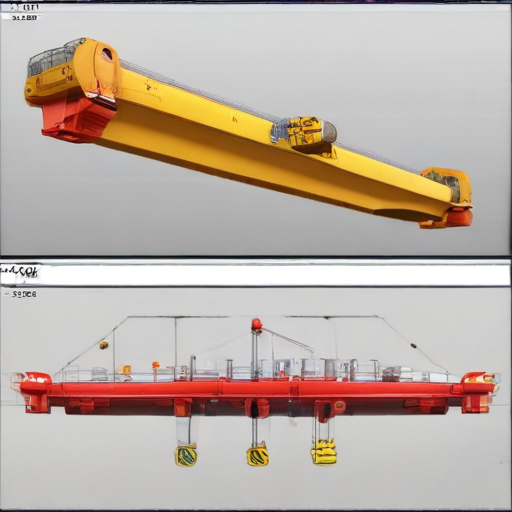
List Product features of “100 ton overhead crane”
Sure, here are the product features of a 100-ton overhead crane concisely listed within 300 words:
1. High Lifting Capacity: Capable of lifting loads up to 100 tons, allowing for the handling of extremely heavy and large objects.
2. Robust Construction: Built with high-strength materials to ensure durability, reliability, and longevity under demanding industrial conditions.
3. Precision Control: Equipped with advanced control systems, including variable frequency drives (VFD) for smooth and precise lifting, lowering, and traversing operations.
4. Double Girder Design: Commonly designed with double girders to provide superior support and stability for heavy-duty applications.
5. Customizable Specifications: Available in various span lengths, lifting heights, and speeds to meet specific operational needs and spatial constraints.
6. Safety Features: Integrated safety mechanisms such as overload protection, emergency stop functions, anti-collision devices, and limit switches to ensure safe operation.
7. Efficient Mechanical System: Utilizes robust wire rope hoists or chain hoists for effective lifting, along with high-quality gear mechanisms for efficient load handling.
8. Easy Operation: User-friendly interfaces with options for pendant control, radio remote controls, or even automated systems to enhance ease of use and operational efficiency.
9. Maintenance Accessibility: Designed for easy maintenance with accessible components, reducing downtime and ensuring consistent performance.
10. Versatility: Suitable for a wide range of industrial applications including manufacturing, assembly lines, shipyards, and construction sites.
11. Environmental Adaptability: Engineered to operate effectively in various environmental conditions, including extreme temperatures and hazardous atmospheres.
12. Compliance with Standards: Adheres to international quality and safety standards such as ISO, ASME, and OSHA, ensuring reliable performance and operator safety.
These features make the 100-ton overhead crane a powerful, reliable, and versatile piece of equipment for heavy-duty lifting in industrial environments.
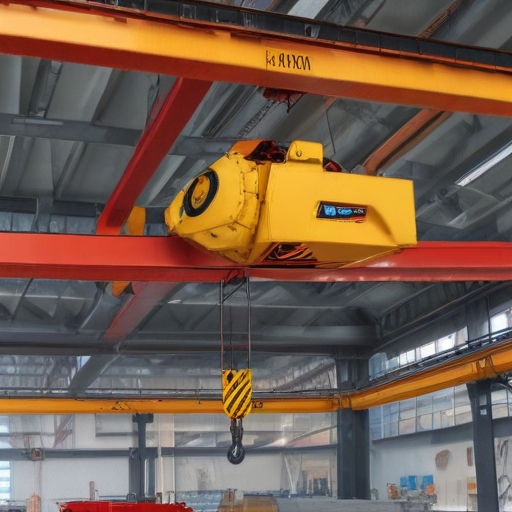
List Application of “100 ton overhead crane”
A 100-ton overhead crane is a robust and versatile piece of lifting equipment used in diverse industries for various heavy-duty applications. Below are some of its key applications:
1. Manufacturing and Assembly Lines: These cranes facilitate the assembly of large machinery and industrial components, allowing for precise placement and efficient workflow in manufacturing environments.
2. Metal Production: In steel mills and aluminum plants, 100-ton overhead cranes are used to handle molten metal, transport raw materials, and move large metal sheets and rolls for further processing.
3. Shipbuilding: Large shipyard facilities use these cranes to lift and position massive ship components, such as hull sections and engines, aiding in the construction and repair of ships.
4. Construction: For large construction projects, these cranes are essential in lifting and placing heavy building materials, such as steel beams, pre-cast concrete sections, and other structural elements.
5. Mining: In mining operations, these cranes are employed to lift heavy equipment, transport mined ores, and handle large earth-moving machinery, ensuring smooth and efficient operations.
6. Power Plants: They play a crucial role in the maintenance and installation of heavy equipment within power generation facilities, including turbines, boilers, and generators.
7. Railway Maintenance: Overhead cranes are utilized in railway yards for the maintenance and assembly of train components, such as engines and carriages, ensuring safe and reliable operations.
8. Automotive Industry: Car manufacturers use these cranes to lift and move vehicle bodies, engines, and other heavy components along the production line.
9. Aerospace: In aerospace manufacturing, 100-ton cranes assist in the assembly and maintenance of large aircraft components, including wings, fuselage sections, and engines.
10. Warehousing and Logistics: Heavy-duty cranes are used in large warehouses and logistics centers to handle oversized and heavy inventory, improving storage and distribution efficiency.
The versatility of a 100-ton overhead crane makes it indispensable in any industry requiring the handling of extremely heavy loads with precision and safety.
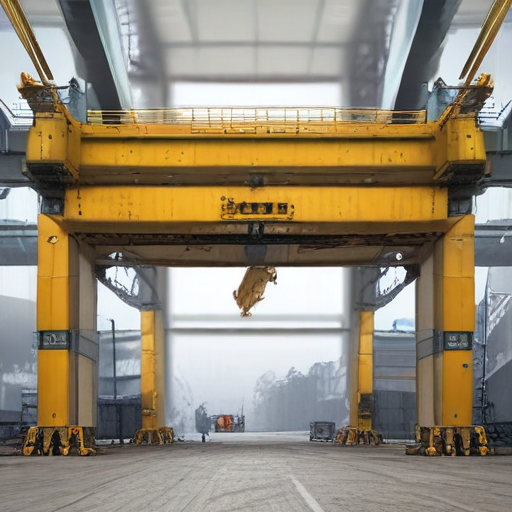
List Various Types of “100 ton overhead crane”
Certainly! Here’s a concise list of various types of “100-ton overhead cranes” commonly used across industries:
1. Single Girder Overhead Crane:
– Design: Features a single bridge girder that supports the trolley and hoist.
– Use: Suitable for lighter duty cycles and facilities with space constraints.
2. Double Girder Overhead Crane:
– Design: Incorporates two parallel girders for enhanced strength and stability.
– Use: Ideal for heavy-duty applications and wide spans, offering greater hook height.
3. Top Running Overhead Crane:
– Design: The crane runs on rails mounted on top of the runway beams.
– Use: Provides maximum hook height and is often used in high-capacity, large-scale operations.
4. Under Running (Underslung) Overhead Crane:
– Design: The crane runs on the bottom flange of the runway beams.
– Use: Used for lighter loads and facilities with limited headroom.
5. Explosion-Proof Overhead Crane:
– Design: Equipped with explosion-proof electrical components and spark-resistant materials.
– Use: Essential for hazardous environments like chemical plants and refineries.
6. Foundry Overhead Crane:
– Design: Specially designed to handle molten metal in foundries.
– Use: Features high-temperature resistance and durable construction.
7. Magnetic Overhead Crane:
– Design: Equipped with electromagnets for handling magnetic materials such as steel.
– Use: Used in steel mills and scrapyards for lifting ferrous metals.
8. Grab Overhead Crane:
– Design: Fitted with a grab bucket for bulk material handling.
– Use: Used in industries like mining, waste management, and ports.
9. Electromagnetic Overhead Crane:
– Design: With an electromagnetic chuck for lifting metal billets and sheets.
– Use: Common in metal fabrication and warehouses handling metal products.
10. European Style Overhead Crane:
– Design: Features advanced technology, compact design, and efficient structure.
– Use: Preferred for high-precision tasks and energy efficiency in modern facilities.
These cranes are chosen based on application needs, working environment, and specific operational requirements, ensuring efficient and safe material handling solutions.
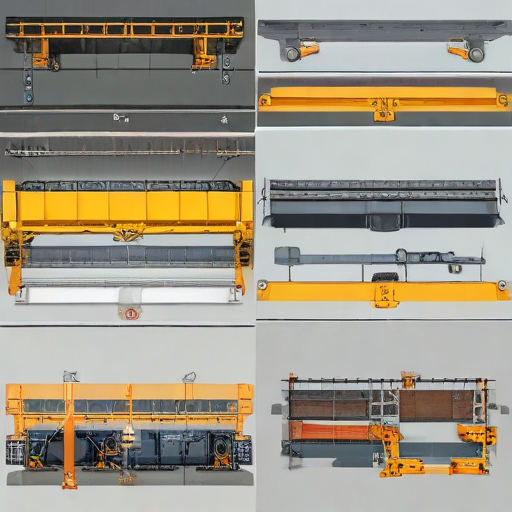
100 ton overhead crane Accessories Upgrades and Custom Manufacturing Options
When upgrading or custom manufacturing a 100-ton overhead crane, several accessories and options can enhance functionality, safety, and efficiency. Key upgrades and customizations include:
1. Hoisting Mechanisms:
– Variable Frequency Drives (VFD): Provide smooth acceleration and deceleration, reducing wear and tear on components.
– Custom Hooks and Spreaders: Tailored for specific loads, improving handling and safety.
2. Control Systems:
– Radio Remote Controls: Allow operators to control the crane from a safe distance, enhancing safety and operational flexibility.
– Automation Systems: Enable semi or fully automated operations for repetitive tasks, increasing productivity and accuracy.
3. Safety Features:
– Load Cells and Weighing Systems: Provide real-time load data to prevent overloading.
– Anti-Sway Devices: Minimize load pendulum motions, enhancing precision and safety.
– Collision Avoidance Systems: Sensors that detect obstacles and prevent crane collisions.
4. Electrification and Power Supply:
– Conductor Bars and Festoon Systems: Ensure reliable power supply to moving parts.
– Energy Regeneration Systems: Capture and reuse energy generated during braking, improving energy efficiency.
5. Structural Modifications:
– Custom Girder Designs: Tailor-made girders to meet specific spatial or load requirements.
– Extended Span and Lift Heights: Adaptations to accommodate unique operational environments.
6. Environmental and Ergonomic Enhancements:
– Weatherproofing and Corrosion Resistance: For cranes operating in harsh environments.
– Ergonomically Designed Operator Cabins: Enhancing operator comfort and focus with climate control and better visibility.
7. Additional Attachments:
– Magnet Systems: For handling metal scraps or sheets.
– Vacuum Lifting Devices: Designed for smooth surfaces like glass or sheet metal.
These upgrades and custom manufacturing options ensure that a 100-ton overhead crane can be adapted precisely to meet specific industrial requirements, enhancing overall operational efficiency and safety.
List Quality Control and The Manufacturing Process of “100 ton overhead crane”
Quality Control
1. Material Inspection: Raw materials such as steel and components are inspected for certification, chemical composition, and physical properties.
2. Dimensional Checks: Precision measurements of parts to ensure they meet design specifications.
3. Welding Quality: Non-destructive testing (NDT) methods like ultrasonic or magnetic particle inspections are performed to ensure weld integrity.
4. Load Testing: Completed cranes are tested under load conditions exceeding their rated capacity to ensure safety and functionality.
5. Electrical Systems Testing: Verification of wiring, connections, and control systems to ensure reliable operation.
6. Final Inspection: A thorough review combining all aspects of mechanical, structural, and electrical checks before dispatch.
Manufacturing Process
1. Design and Engineering: Initial blueprint creation, meeting specific client and regulatory requirements. Software tools like CAD are often used.
2. Material Procurement: Acquisition of high-grade steel, motors, wiring, and other essential components.
3. Cutting and Shaping: CNC machines and cutting tools are used to shape raw materials into required dimensions for the crane structure.
4. Welding and Assembly: Structural components are welded together. Precision and quality control measures ensure strength and durability.
5. Machining: Fine adjustments and machining of critical parts to meet tight tolerances.
6. Surface Treatment: Anti-corrosion treatments like zinc plating or epoxy painting are applied for durability.
7. Mechanical Assembly: Motors, gearboxes, wheels, and hooks are installed onto the crane structure.
8. Electrical Installation: Wiring, control systems, and safety devices are set up. Programmable logic controllers (PLCs) are configured.
9. Testing and Calibration: The crane undergoes functional and safety testing to ensure it operates as intended.
10. Packaging and Shipping: Once all inspections are passed, the crane is dismantled (if required), securely packed, and prepared for shipping to the client.
The meticulous quality control measures ensure the overhead crane operates safely and effectively, meeting all industrial standards and customer requirements.
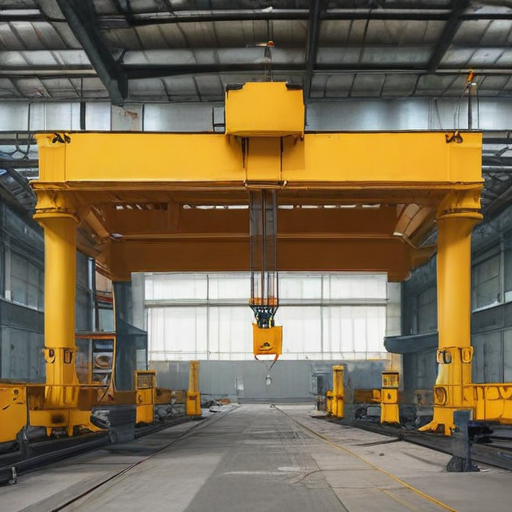
How to use “100 ton overhead crane”
Using a 100-ton overhead crane efficiently and safely involves several key steps:
1. Pre-Operation Checks:
– Inspection: Conduct a thorough inspection of the crane. Check the hoist, trolley, bridge, controls, and safety mechanisms.
– Environment: Ensure the crane’s working area is clear of obstructions and personnel.
2. Preparation:
– Load Assessment: Determine the weight and balance of the load. Ensure it does not exceed the crane’s capacity.
– Rigging: Select proper rigging gear like slings, chains, and hooks. Inspect them for any wear and tear.
3. Operational Steps:
– Positioning: Move the crane to the load. Use the controls to position the hoist directly above the load.
– Lifting: Attach the load securely. Slowly lift the load a few inches to test the balance and stability.
– Traversing: Once stable, raise the load to a safe height. Move the trolley and bridge to transport the load.
– Lowering: Position the load over the designated area and slowly lower it.
4. Safety Measures:
– Communication: Use hand signals or communication devices to coordinate with spotters and other personnel.
– Emergency Preparedness: Be aware of the crane’s emergency stop function. Know the procedures for power failure or other emergencies.
5. Shutdown:
– Securing: After use, position the crane in its home position. Ensure the hook is raised and secured.
– Lockout/Tagout: Follow your organization’s lockout/tagout procedures if maintenance is required.
6. Post-Operation Checks:
– Inspection: Inspect the crane again for any potential issues that arose during use.
– Documentation: Log your operations and inspections as required.
Remember, only certified operators should use the crane. Adherence to the manufacturer’s manual and safety regulations is essential for safe and efficient operation.
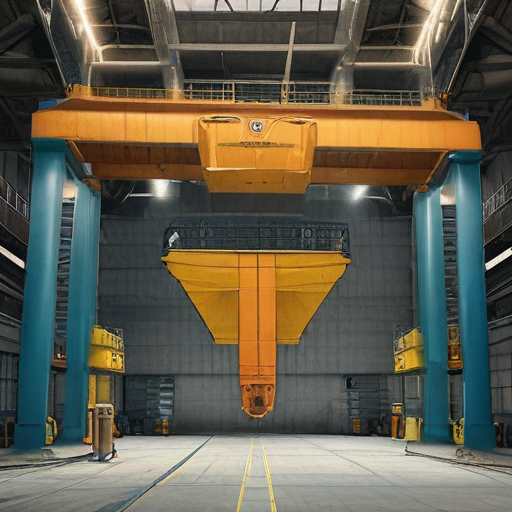
“100 ton overhead crane” Comparative Analysis
When considering a 100-ton overhead crane, several factors need to be assessed to ensure suitability for your specific application. Below, a comparative analysis is presented focusing on components like design, functionality, safety, and cost-effectiveness.
Design and Construction
Single Girder vs. Double Girder:
– Single Girder: Generally used for lighter loads and shorter spans (up to 20 meters). They are more cost-effective and easier to install.
– Double Girder: Engineered for heavier loads and longer spans (exceeding 20 meters). They offer greater hook height and are robust, but come with higher initial cost and complexity in installation.
Functionality and Performance
Top-Running vs. Under-Running:
– Top-Running: Typically employed for heavy-duty tasks, offering greater hook height. These cranes run on rails mounted on the top of the runway beams and can handle heavier capacities.
– Under-Running: Suitable for lighter-duty applications and where overhead space is restricted. They run on the bottom flange of runway beams and are beneficial in maximizing floor space.
Safety Features
– Anti-Sway Technology: Reduces load swing, enhancing precision and safety.
– Overload Protection: Prevents lifting loads beyond the crane’s capacity.
– Emergency Braking Systems: Ensure instant halting to avoid accidents.
Cost Analysis
Initial Investment:
– Single Girder: Lower initial investment but suitable for lesser load capacities.
– Double Girder: Higher initial investment but greater durability and load capacity.
Operational Costs:
– Energy Efficiency: Modern cranes come equipped with energy-efficient motors and regenerative drives to reduce power consumption.
– Maintenance: Double girder cranes, although robust, might incur higher maintenance costs due to their complex structure compared to single girder cranes.
Conclusion
Selecting a 100-ton overhead crane involves balancing initial cost, structural requirements, safety features, and long-term operational efficiency. Double girder, top-running cranes are often preferred for heavy, industrial applications due to their load capacity and durability, while single girder or under-running options may suffice for less demanding uses. The final decision should align with the specific needs of your operation, considering both immediate and future requirements.
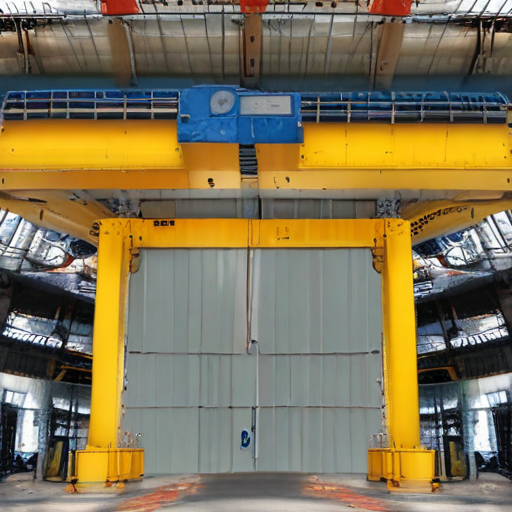
“100 ton overhead crane” Warranty and Support
When purchasing a 100-ton overhead crane, understanding the warranty and support options is crucial for long-term satisfaction and operational efficiency. Here’s a concise overview of what to expect:
Warranty
1. Duration: Typically, the warranty for a 100-ton overhead crane lasts between 1 to 3 years, depending on the manufacturer.
2. Coverage: The warranty generally covers defects in materials and workmanship. Key components such as the hoist, trolley, and bridge structure are usually included.
3. Exclusions: Normal wear and tear, misuse, improper maintenance, and modifications outside manufacturer guidelines are commonly excluded from coverage.
4. Claim Process: Customers should promptly report any defects. Proof of regular maintenance and adherence to the operational manual is often required to validate claims.
Support
1. Technical Assistance: Most manufacturers offer comprehensive technical support, including phone, email, or on-site consultations. This ensures that any operational issues can be swiftly resolved.
2. Spare Parts Availability: Easy access to genuine spare parts is vital. Many manufacturers assure prompt delivery of parts to minimize downtime.
3. Training: Initial and ongoing operator training is typically offered, either on-site or through online modules. Proper training ensures safe and efficient crane operation.
4. Regular Maintenance Services: Scheduled maintenance services are often available and can extend the crane’s operational life. These services might be bundled with the purchase or offered as part of a service agreement.
5. Emergency Repairs: Some manufacturers provide emergency repair services to address critical failures and reduce operational disruptions.
Conclusion
A well-defined warranty and robust support system are essential when investing in a 100-ton overhead crane. Ensure that the manufacturer offers comprehensive coverage and responsive support to safeguard your investment and maintain uninterrupted operations. Always read the fine print and clarify any ambiguities before finalizing your purchase.
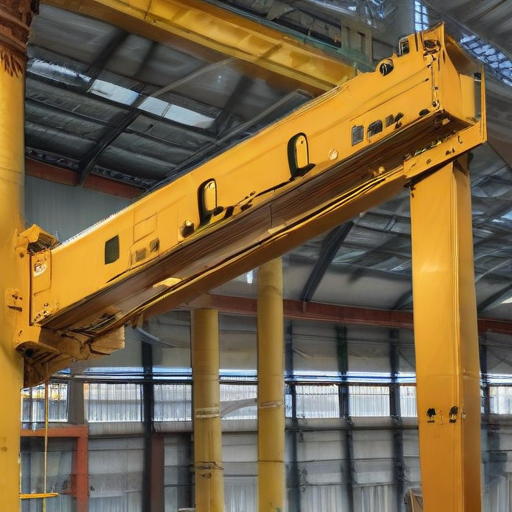
List “100 ton overhead crane” FAQ
Sure, here are some frequently asked questions (FAQ) about a 100-ton overhead crane, summarized to stay within the 300-word limit:
FAQs About 100 Ton Overhead Crane
1. What is a 100-ton overhead crane?
A 100-ton overhead crane is a heavy-duty lifting device capable of lifting loads up to 100 tons. It typically operates on a rail system installed on the ceiling of a facility or outdoors.
2. What are the types of 100-ton overhead cranes?
Common types include single-girder and double-girder cranes. They can also be classified as top-running or under-running based on their rail position.
3. What industries use 100-ton overhead cranes?
These cranes are widely used in steel mills, shipyards, assembly lines, and construction sites for moving heavy materials.
4. How is the crane powered?
The crane can be electrically, pneumatically, or hydraulically powered. Electric power is the most common.
5. What safety features should be included?
Critical safety features include overload protection, emergency stop buttons, end truck bumpers, and anti-collision devices.
6. How do you maintain a 100-ton overhead crane?
Regular maintenance includes inspecting wire ropes, checking electrical systems, lubricating moving parts, and replacing worn-out components.
7. Can the crane be customized?
Yes, most manufacturers offer customization options to meet specific operational requirements, such as different lifting speeds, spans, and control systems.
8. How do you choose the right crane for your needs?
Consider the maximum load, span, lifting height, operating environment, and duty cycle to choose an appropriate model.
9. What are the installation requirements?
Proper rail alignment, structural support, and electrical systems are essential. Professional installation is strongly recommended.
10. What training is required for operators?
Operators must undergo specialized training to understand load handling, safety protocols, and equipment operation. Certification may also be required.
Conclusion
A 100-ton overhead crane is a versatile and robust lifting solution for heavy industry, provided it’s chosen and maintained appropriately. Proper training and safety measures are paramount for optimal operation.
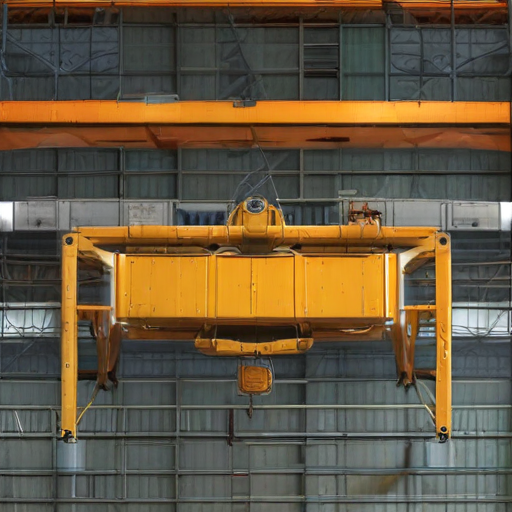
Top 10 FAQ with answer about 100 ton overhead crane for Buyer Sourcing from China
Certainly! Here are the top 10 frequently asked questions (FAQs) about sourcing a 100-ton overhead crane from China, along with concise answers:
1. What is the lead time for a 100-ton overhead crane from China?
– The typical lead time ranges from 8 to 12 weeks, depending on the complexity and customization requirements.
2. How much does a 100-ton overhead crane cost?
– Prices can vary greatly, but generally range from $50,000 to $200,000 based on specifications, features, and manufacturer.
3. What standards do Chinese manufacturers follow for cranes?
– Most reputable manufacturers adhere to international standards like ISO, CE, and FEM. Confirm certifications before purchase.
4. Can I customize the crane according to my needs?
– Yes, customization is typically available for dimensions, lifting height, speed, controls, and additional features.
5. Are spare parts and maintenance support readily available?
– Reliable manufacturers usually offer lifetime spare parts support, and many also provide detailed maintenance guides and remote assistance.
6. What’s included in the warranty?
– Warranties typically cover structural components for one year, but can vary. Confirm specifics, including what parts and services are covered.
7. How is shipping handled?
– Shipping can be organized by the manufacturer or a freight forwarder; costs vary by destination and mode (sea freight is most common).
8. Are on-site installation and commissioning provided?
– Many suppliers offer installation and commissioning services, either by sending engineers or offering remote support. Additional fees may apply.
9. What information do I need to provide for a quote?
– Key details include lifting capacity, span, lifting height, duty cycle, power supply, and any specific environmental conditions.
10. How do I ensure the quality of the crane?
– Verify the manufacturer’s credentials, request previous project references, and if possible, conduct factory inspections or third-party quality audits.
These answers provide a good foundation for potential buyers looking to source a 100-ton overhead crane from China.

